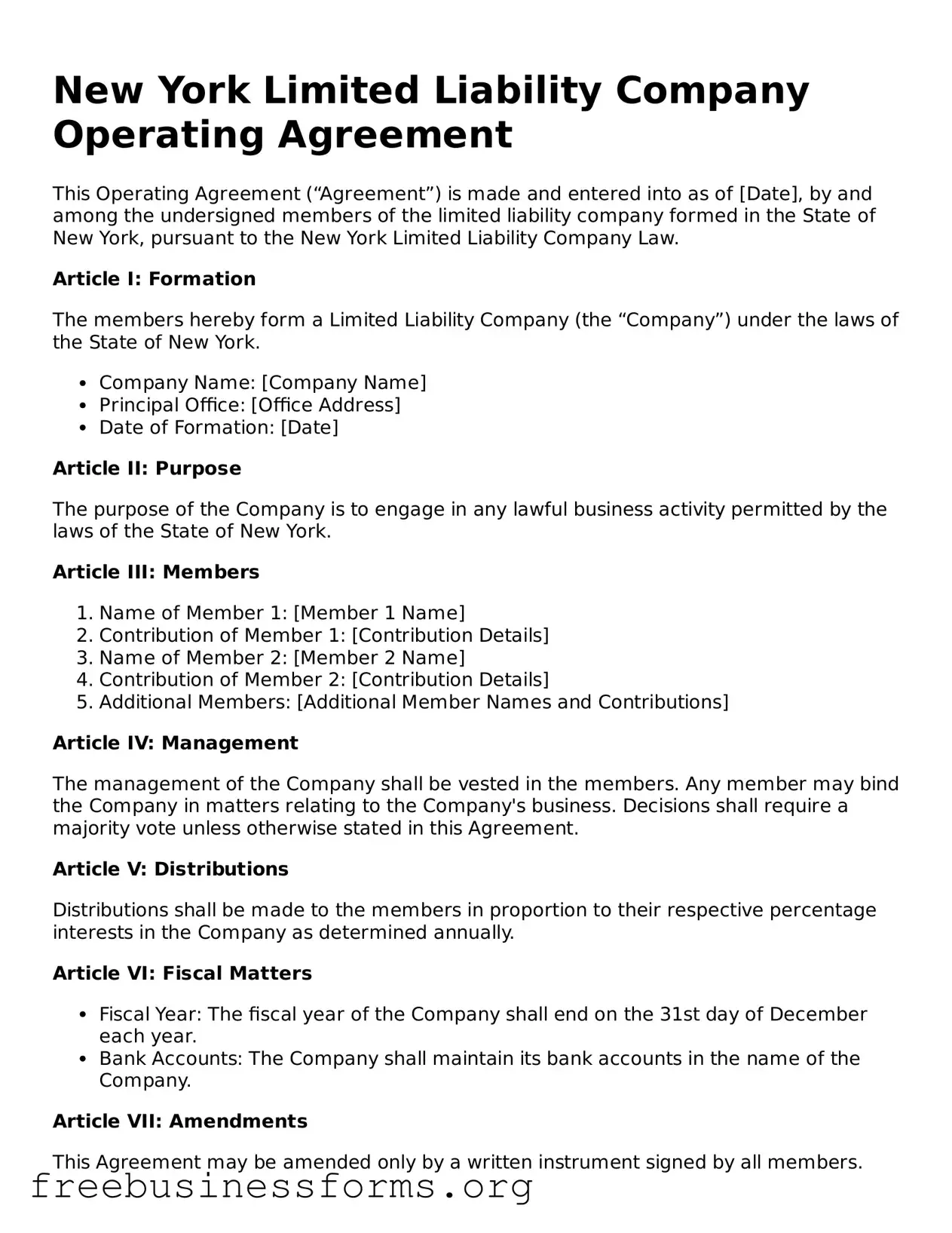New York Limited Liability Company Operating Agreement
This Operating Agreement (“Agreement”) is made and entered into as of [Date], by and among the undersigned members of the limited liability company formed in the State of New York, pursuant to the New York Limited Liability Company Law.
Article I: Formation
The members hereby form a Limited Liability Company (the “Company”) under the laws of the State of New York.
- Company Name: [Company Name]
- Principal Office: [Office Address]
- Date of Formation: [Date]
Article II: Purpose
The purpose of the Company is to engage in any lawful business activity permitted by the laws of the State of New York.
Article III: Members
- Name of Member 1: [Member 1 Name]
- Contribution of Member 1: [Contribution Details]
- Name of Member 2: [Member 2 Name]
- Contribution of Member 2: [Contribution Details]
- Additional Members: [Additional Member Names and Contributions]
Article IV: Management
The management of the Company shall be vested in the members. Any member may bind the Company in matters relating to the Company's business. Decisions shall require a majority vote unless otherwise stated in this Agreement.
Article V: Distributions
Distributions shall be made to the members in proportion to their respective percentage interests in the Company as determined annually.
Article VI: Fiscal Matters
- Fiscal Year: The fiscal year of the Company shall end on the 31st day of December each year.
- Bank Accounts: The Company shall maintain its bank accounts in the name of the Company.
Article VII: Amendments
This Agreement may be amended only by a written instrument signed by all members.
Article VIII: Miscellaneous
- This Agreement shall be governed by and construed in accordance with the laws of the State of New York.
- In the event of any dispute arising under this Agreement, the members shall engage in good faith negotiations to resolve the matter.
IN WITNESS WHEREOF, the members have executed this Operating Agreement as of the date first above written.
_____________________________ (Member 1)
_____________________________ (Member 2)
_____________________________ (Additional Members as needed)
